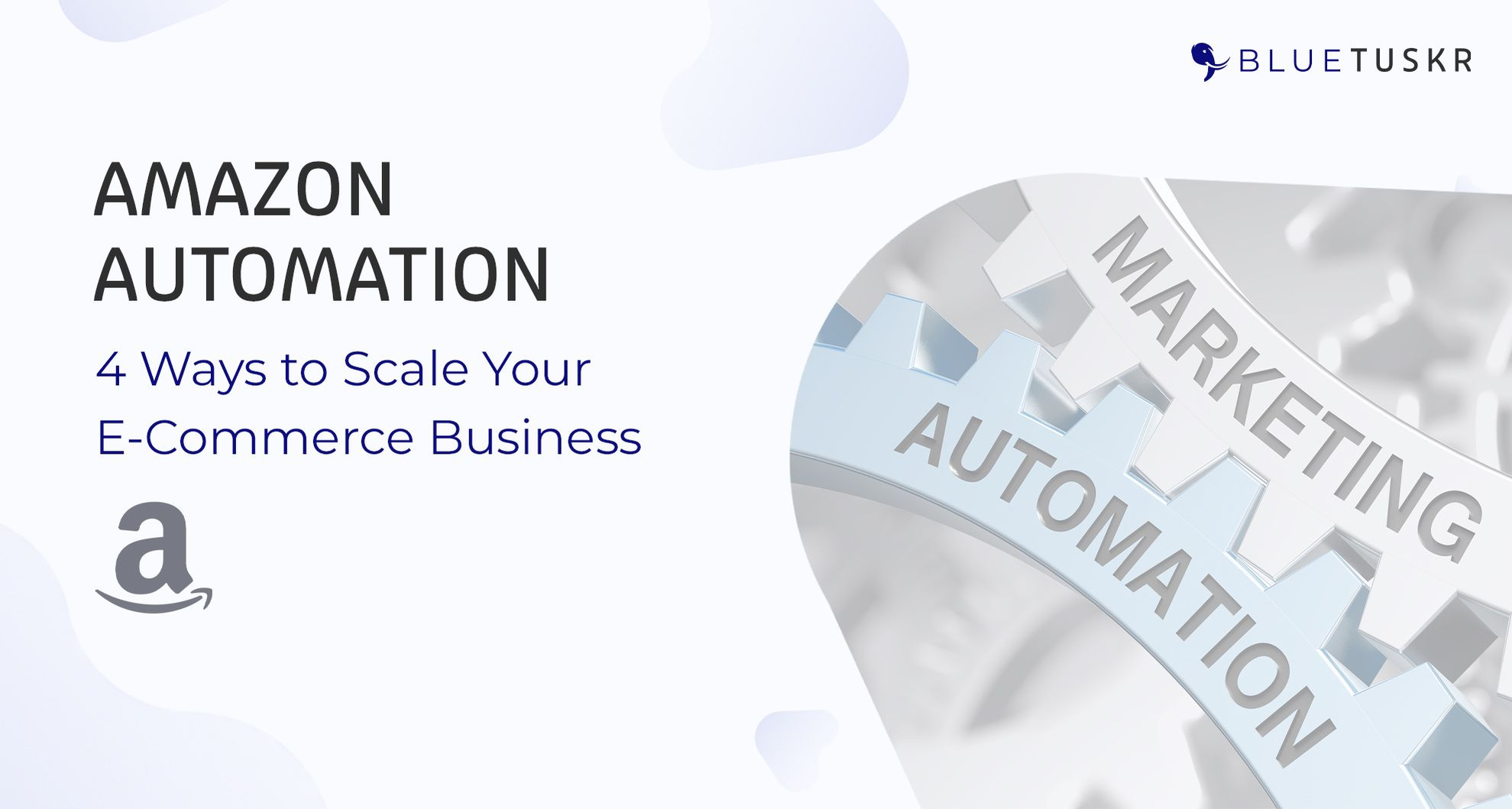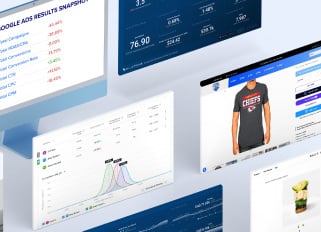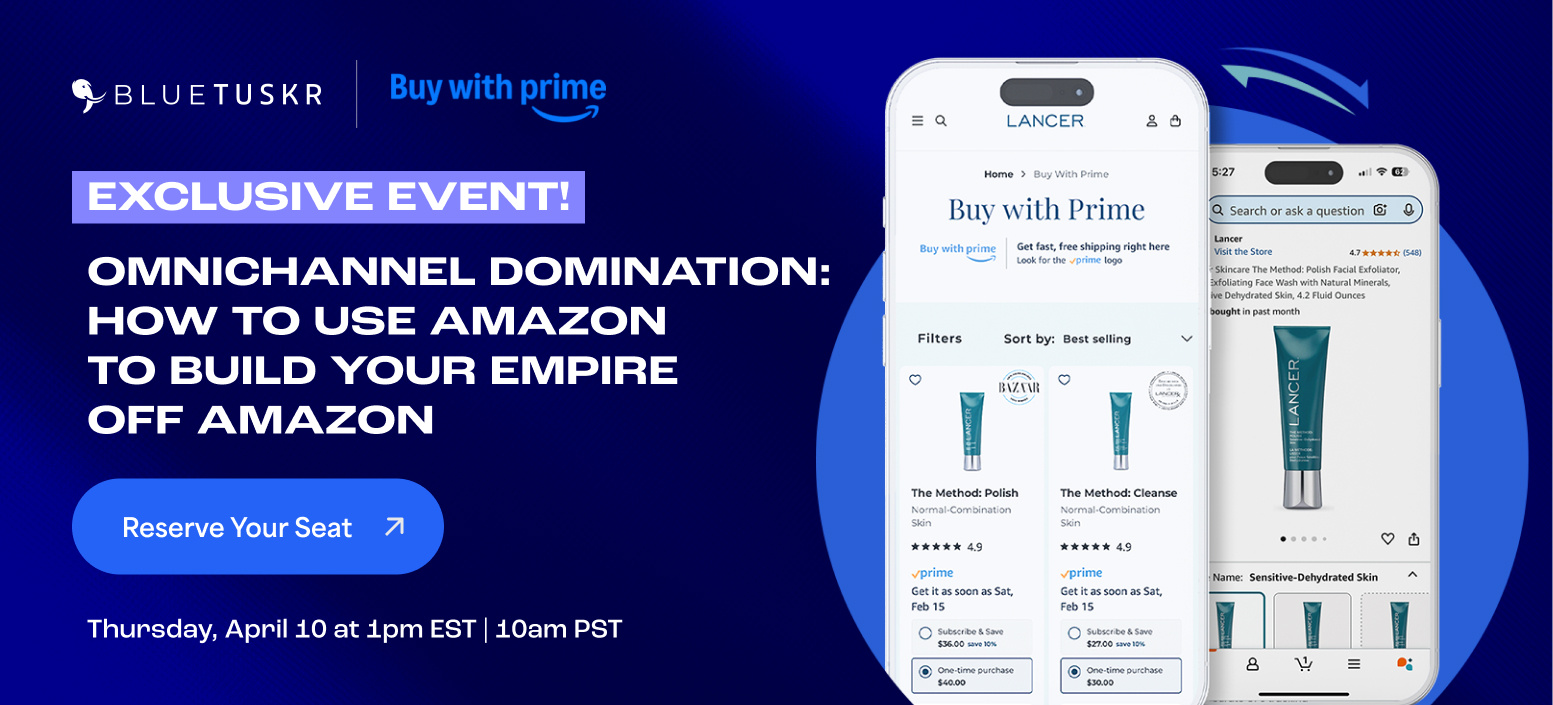
Amazon Automation: 8 Ways to Scale Your E-Commerce Business - Updated 2023
The eCommerce industry has witnessed exponential growth in recent years, and Amazon is at the forefront of this growth. As more sellers join Amazon's marketplace, the competition has become fierce. However, managing a successful Amazon store can be a daunting task, especially as the competition is fierce. That's where Amazon automation comes in.
In 2020, Amazon launched a new program called Amazon Automation, which offers fulfillment services for third-party sellers. The program uses robots to automate the picking, packing, and shipping processes, reducing delivery times and increasing efficiency.
In this article, we will explore the importance of using Amazon automation to successfully scale your e-commerce business.
What is Amazon automation?
Amazon automation refers to using technology to automate various tasks in your Amazon store. The technology can range from simple tools to complex software that can streamline and automate tasks such as order management, inventory management, repricing, and customer service.
Why is Amazon automation important for e-commerce businesses?
-
Saves Time and Increases Efficiency
By automating repetitive tasks, Amazon automation saves time and increases efficiency. For example, inventory management can be time-consuming, but with automation, businesses can easily track their stock levels, set reorder points, and automatically reorder products.
-
Reduces Errors
Manual processes are prone to errors, which can lead to costly mistakes. Amazon automation services reduce the risk of errors by automating tasks such as order processing and inventory management.
-
Increases Sales and Revenue
Automation can help increase sales and revenue by optimizing product listings, pricing strategies, and advertising campaigns. For instance, Amazon repricing software can adjust product prices in real-time to remain competitive and win the Buy Box.
-
Improves Customer Satisfaction
Amazon automation can help improve customer satisfaction by providing fast and accurate order processing, timely shipping, and efficient customer service.
10 Ways to Scale Your Amazon Business With E-Commerce Automation
With over 200 million active users and more than 2 million sellers worldwide, Amazon is a highly competitive marketplace. Scaling your business is crucial if you want to succeed in this crowded marketplace. By automating your Amazon business, you can streamline your processes, reduce human error, and increase productivity.
Here are 10 ways to automate your Amazon e-commerce business and take it to the next level.
1. Order Processing and Fulfillment
Once a customer places an order on Amazon, the order is sent to the seller for processing. The seller then has to pick up the item, pack it, and create a shipping label. The seller then hands over the package to the carrier for delivery.
Order fulfillment is the way by which orders are received, processed, and delivered to customers. This process involves various key steps, including inventory management, order processing, and shipping. Amazon has implemented several automation technologies to streamline the order fulfillment process, including:
-
Warehouse Robotics
Amazon uses warehouse robots to pick and pack orders. These robots can move quickly through the warehouse and pick up items more efficiently than humans, reducing the time it takes to process an order.
-
Inventory Management
Another automation technology is machine learning algorithms to help with inventory management. These algorithms can predict which products are likely to sell faster and which products are likely to remain in stock for a long time. This helps Amazon sellers keep their inventory levels optimal, reducing the risk of stockouts and overstocking.
-
Order Processing
Amazon has automated its order processing system to reduce errors and speed up the process. The system can automatically check for order accuracy, process payments, and generate shipping labels.
-
Predictive Analytics
This is used to forecast demand for products. Amazon makes use of this technology to help manage inventory levels and ensure that popular products are always in stock.
2. Implement Automated Pricing Strategies
Automated pricing strategies can help sellers stay competitive by adjusting their prices in real time based on various factors such as demand, competition, and seasonality. This can help sellers win the Buy Box, which is the area on Amazon where customers can add products to their cart and make a purchase.
Amazon's algorithm considers several factors when deciding which seller should win the Buy Box, including price, fulfillment method, shipping speed, and seller feedback. By implementing automated pricing strategies, sellers can optimize their pricing to win the Buy Box and boost their sales.
To implement automated pricing strategies, sellers can use third-party software that integrates with Amazon's API. These tools can help individual sellers monitor their competitors' prices, track demand, and adjust their prices accordingly.
Some of the popular Amazon automation tools for automated pricing strategies include:
- RepricerExpress
- Feedvisor
- SellerActive
- Informed. co
- Teikametrics
These tools use algorithms and machine learning to analyze market trends and adjust prices in real time. Amazon sellers can set their pricing rules based on their goals, such as maximizing profits or winning the Buy Box, and the software will automatically adjust prices to achieve those goals.
3. Automate your Inventory Management.
Supervising inventory on Amazon can be stressful, especially if you have a large number of SKUs. With Amazon inventory management software, you can track your inventory levels in real-time, set reorder points, and automate your purchase orders. This helps prevent excess inventory. It also ensures that you never run out of stock and can fulfill orders quickly.
4. Use a Shipping Automation Tool.
Shipping is a critical aspect of e-commerce. With a shipping automation tool, you can streamline your shipping process, print labels, and track shipments.
Once the package is packed and labeled, it is handed over to the carrier for delivery. Amazon has partnered with several carriers, including USPS, UPS, and FedEx, to ensure fast and reliable delivery of packages. To streamline the shipping process, Amazon has implemented several automation systems.
For example, Amazon uses predictive analytics to optimize shipping routes. The system analyzes factors such as weather, traffic, and distance to determine the best route for delivery. This saves you time and ensures that your customers receive their orders on time.
5. Automating Customer Service and Feedback Management.
Customer service and feedback management are two critical aspects of selling on Amazon. Customer service is essential for maintaining high customer satisfaction, which can lead to positive reviews and repeat business. Feedback management is critical for maintaining a good reputation on Amazon and attracting new and potential customers. Positive reviews are vital for a business - 94% of consumers have been put off making a purchase over negative reviews. So we understand how important collecting positive reviews can be.
However, managing customer service and feedback can be time-consuming and labor-intensive. This is where automation can help. By automating these processes, Amazon sellers can save time and resources and improve their overall efficiency.
To automate customer service and feedback management, sellers can use third-party software that integrates with Amazon's API. These tools can help sellers manage customer inquiries, provide support, and manage feedback efficiently.
Some of the popular Amazon automation tools for customer service and feedback management include:
- Zendesk
- Freshdesk
- Help Scout
- FeedbackFive
- FeedbackWhiz
By using these tools, Amazon sellers can respond to customer inquiries promptly, resolve issues quickly, and manage feedback effectively. This helps improve customer experience and encourage repeat business.
6. Use an Automated Email Marketing Tool.
Email marketing is a highly effective way to promote your products and increase sales. With an automated email marketing tool, you can send targeted emails to your customers based on their buying history, preferences, and behavior. This ensures that you remain top of mind, and your customers keep coming back.
7. Utilize Amazon Advertising Automation.
One of the most popular automation tools for Amazon sellers is Amazon advertising automation. This tool automates the process of creating and managing advertising campaigns on Amazon, making it easier for sellers to reach their target audience, and increase their sales and brand visibility.
The key features of Amazon advertising automation include the ability to set up campaigns quickly and easily, analyze data to optimize campaigns for better performance, and manage advertising budgets to ensure that campaigns are cost-effective. This allows sellers to focus on other aspects of their business, such as product development and customer service.
Amazon advertising automation also offers a range of targeting options, such as keyword targeting and product targeting, which can help sellers reach their ideal audience more effectively. This is particularly useful for sellers who are trying to compete with other sellers in crowded niches, where targeting the right audience can make all the difference.
Another key benefit of Amazon advertising automation is that it provides real-time data and analytics, which sellers can use to track their advertising performance and make data-driven decisions. This can help sellers identify which brand campaigns are working well and adjust where needed.
There are several Amazon advertising automation tools available on the market, each with its unique features and benefits. Some popular options include:
-
Sellics
Sellics is an all-in-one Amazon automation tool that includes features such as keyword research, bid management, and performance analytics. The tool also provides a range of optimization recommendations to help businesses improve their advertising campaigns.
-
AdBadger
This is a tool designed specifically for managing Amazon-sponsored product ads. The tool provides real-time performance data and allows businesses to automate bid management, amazon keyword research, and campaign optimization.
-
Ignite
Ignite is an Amazon automation tool developed by Seller Labs. The tool provides features such as bid management, keyword research, and campaign optimization. It also includes a range of reporting and analytics features to help businesses track their performance.
8. Automate Your Financial Management.
Managing finances can be a challenging task, especially if you have a large number of transactions. With an automated financial management tool, you can track your sales, expenses, and profits in real time. This ensures that you have accurate financial data and can make informed business decisions.
9. Use a Chatbot for Automated Sales.
Chatbots are becoming increasingly popular in e-commerce. With a chatbot, you can automate your sales process, answer customer inquiries, and provide personalized recommendations. This ensures that you provide a seamless shopping experience for your customers and increase your sales.
10. Social Media Automation
With billions of people using platforms like Facebook, Twitter, and Instagram, it's no surprise that businesses are turning to social media as a way to reach their target audience. However, managing multiple social media accounts can be time-consuming and difficult, especially for small businesses with limited resources. This is where social media automation comes in.
Social media automation involves using tools to schedule posts, automatically engage with followers, and monitor social media activity. By automating these tasks, businesses can save time and focus on other aspects of their business.
For example, a business selling fitness products on Amazon could use social media automation to schedule posts promoting their products, engage with users who have shown interest in fitness, and monitor mentions of their brand on social media. This would allow them to increase brand awareness and customer communication, drive traffic to their Amazon page, and ultimately increase sales.
One popular social media automation tool is Hootsuite. With Hootsuite, sellers can successfully schedule their social media posts in advance, saving them time and allowing them to focus on other aspects of their business. Hootsuite also allows sellers to monitor their social media accounts, engage with their followers, and track their performance.
Another useful social media automation tool is Buffer. Buffer is similar to Hootsuite and allows sellers to schedule their social media posts in advance. However, Buffer also provides valuable insights into social media performance, allowing sellers to optimize their social media strategy.
How Can You Implement Amazon Automation in Your E-commerce Business?
-
Utilize Amazon's built-in tools
Amazon offers several built-in tools to help sellers automate various tasks. For example, Amazon Fulfillment by Amazon (FBA) Automation program can automate order processing, picking, packing, and shipping. Additionally, Amazon's Automatic Pricing tool can automatically adjust product prices based on competition and sales trends.
-
Use third-party software
Several third-party software providers offer tools to automate various Amazon tasks. For example, inventory management tools such as Sellbrite and SkuVault can help automate stock levels and reorder points. Additionally, tools such as FeedbackWhiz and Feedback Genius can automate customer feedback and reviews.
- Hire an Amazon automation expert
If you're not sure where to start with Amazon automation, consider hiring an Amazon automation expert. These experts can help you identify the tasks that can be automated and recommend the best tools for your business.
Conclusion
Amazon automation is essential for e-commerce businesses looking to scale their operations on the world's largest online marketplace. Start by identifying the areas that need automation in your business and choose the right tools that suit your needs.
With the right automation tools and strategies, you can save time, reduce errors, and increase sales and revenue. It can also help in fulfilling orders quickly, increase brand awareness and improve customer satisfaction.
As the e-commerce automation market continues to grow, businesses that adopt Amazon automation will have a competitive advantage over those that don't.
Interested in e-commerce marketing strategy services? Contact our team at Bluetuskr, an e-commerce marketing agency.
Connect With Us
Recent Post

.png)








Tell us what you think!